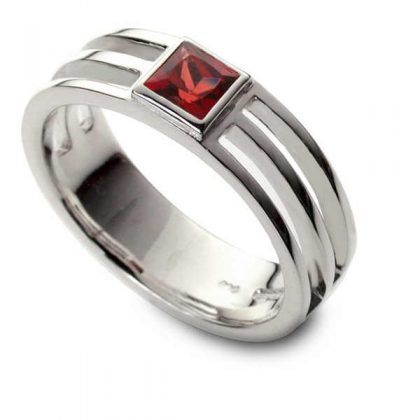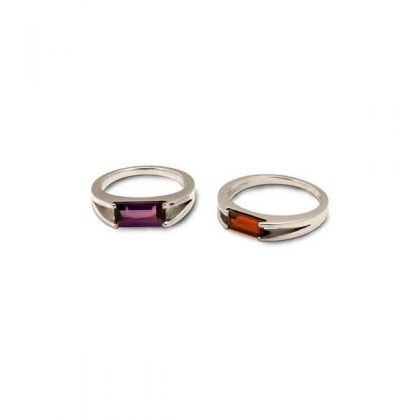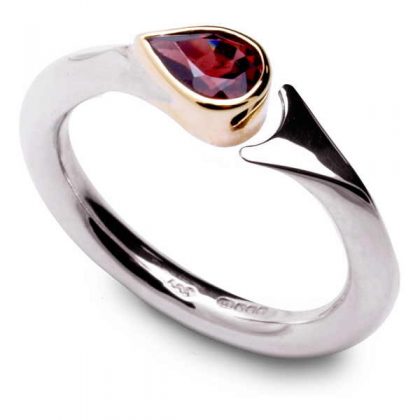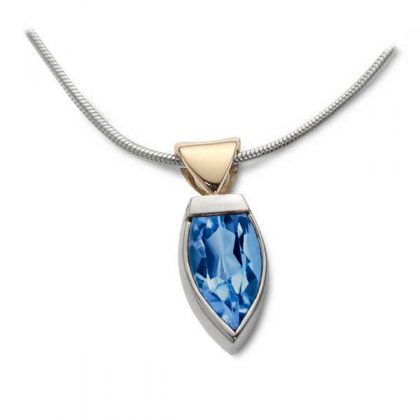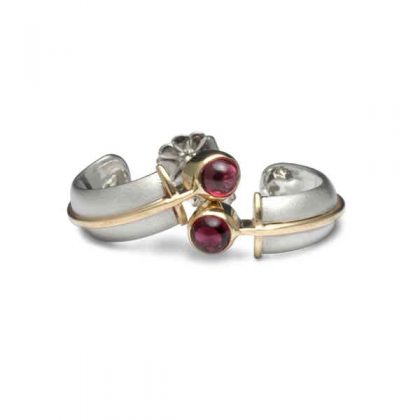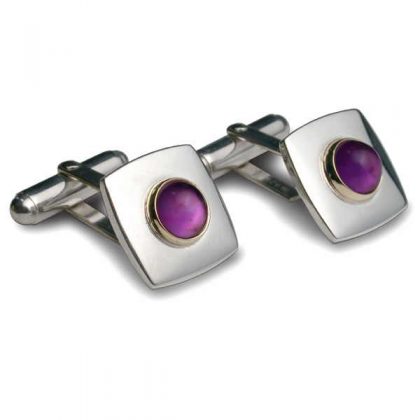Garnet
GARNET
Hardness: 6.5 – 7
Birthstone: January
Anniversary: 2nd 
The name “garnet” comes from the Latin word “Garanatus,” meaning “seedlike,” and refers to the seeds of the pomegranate which are deep red and lustrous. Garnet is a silicate mineral and is actually a very diverse material and comes in many shades including red, orange, yellow, green, blue, purple, brown, black, pink and colourless. It’s also used as an abrasive and small fragments of garnet are used in water jets to cut steel and other resistant materials.
![]() In jewellery it is primarily the deep red lustrous stones of the Almandine group that are used and large garnets have, in the past been known as ‘carbuncles’. This isn’t because they look like boils, it’s because both boils and large garnets look like a ‘live coal’ or ‘carbuncles’ in Latin.
In jewellery it is primarily the deep red lustrous stones of the Almandine group that are used and large garnets have, in the past been known as ‘carbuncles’. This isn’t because they look like boils, it’s because both boils and large garnets look like a ‘live coal’ or ‘carbuncles’ in Latin.
These days, the term is seldom used and the phrase, ‘I gave my wife a large carbuncle’ would be more likely to be seen as an indication of contagion rather than of love.
This is unfortunate as the garnet has traditionally been seen as a gift of love and especially as a promise of love on parting. Apparently Hades had given a pomegranate to Persephone before she left him to ensure her speedy return. (I think I’d have just eaten it myself).
![]() Bohemia, which is now a part of Czechoslovakia, was a great source of garnets in the past, and the interiors of many castles and churches were decorated with them. Traditionally they were set in tight clusters like the stones in the pomegranate, a style which is still popular in the region today and is reflected in the garnet cluster rings that were common in the Victorian ere.
Bohemia, which is now a part of Czechoslovakia, was a great source of garnets in the past, and the interiors of many castles and churches were decorated with them. Traditionally they were set in tight clusters like the stones in the pomegranate, a style which is still popular in the region today and is reflected in the garnet cluster rings that were common in the Victorian ere.
Colour variations in garnet
Garnet is one of those amazing materials that takes on different colours depending on subtly different chemical makeup. Whist most of the garnets used in the jewellery trade are the deep red colour a vibrant green is also popular and goes by the name Tsavorite. It was first discovered in the 1960s in the Tsavo area of Kenya from which it takes its name. It’s a beautiful stone and rivals the colour and clarity of the very best emeralds.
![]() Another green variety, Demantoid is even more brilliant than tsavorite, hence, much more expensive. The yellow variety is known as Hessonite and is sometimes used as a substitute for topaz. Rhodalite garnets are a combination of the Almandine and the Pyrope forms of the mineral, and have a purplish, red hue. These are also sometimes known as ‘Cape rubies’ or ‘Californian rubies’ as they have a hue that is more commonly associated with rubies than with garnets.
Another green variety, Demantoid is even more brilliant than tsavorite, hence, much more expensive. The yellow variety is known as Hessonite and is sometimes used as a substitute for topaz. Rhodalite garnets are a combination of the Almandine and the Pyrope forms of the mineral, and have a purplish, red hue. These are also sometimes known as ‘Cape rubies’ or ‘Californian rubies’ as they have a hue that is more commonly associated with rubies than with garnets.
There are also blues, oranges and raspberry reds and an intriguing variety which change from green to purple in different kinds of light.
In most of the pieces that I set with garnets I am using the traditional deep red variety although in larger pieces and one-offs I tend to choose Rhodalites for the more subtle colour and because they are lighter in hue. This becomes important with large stones as, the deeper the stone, the less light it will pass and this can make large garnets appear a little dark and lifeless. For the smaller stones I like the boldness of the deep, blood-reds that can add a good lick of colour to the subtler tones of the metals.
You can click the thumbnails below to see a selection of pieces that are set with garnet.

